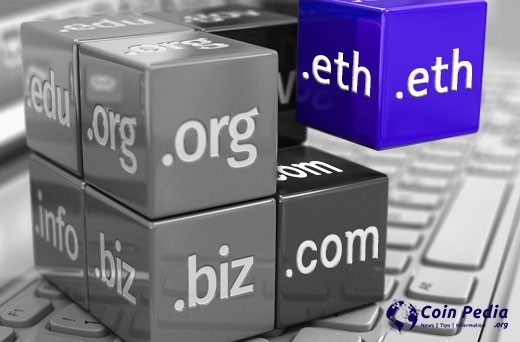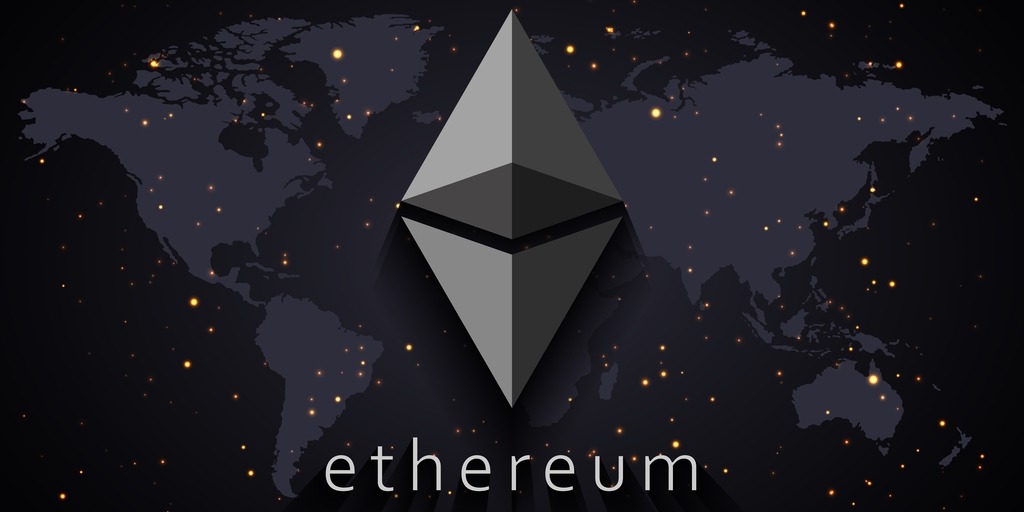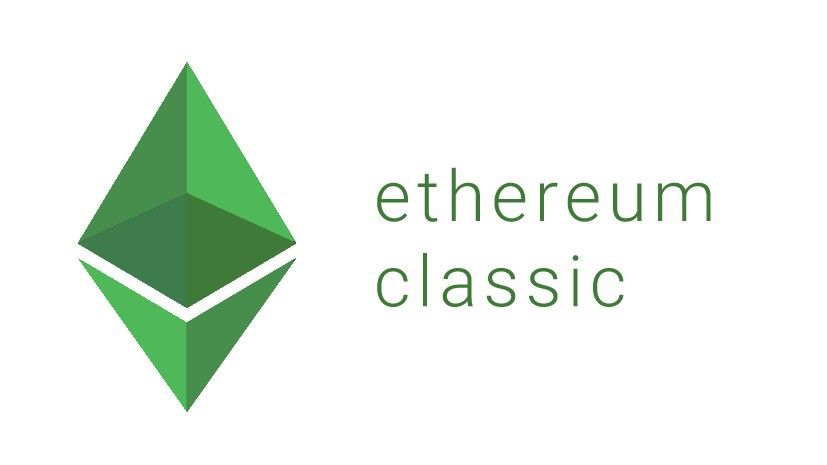The Ethereum Virtual Machine (EVM): What Is It?
The blockchain network Ethereum is where the idea of programmable smart contracts was first proposed. How does Ethereum provide the framework for assembling and carrying out many smart contracts? The Ethereum Virtual Machine, or EVM, would be the solution. What role does the Ethereum Virtual Machine play in blockchain-based applications? Similar to the challenges in defining the cloud, it is impossible to describe the physical manifestation of the EVM.
Only one ‘canonical’ state can be said to exist for any given block in the Ethereum chain. It is significant to remember that the EVM defines the guidelines for calculating new valid states from one block to the next. The following post provides a thorough explanation of how the EVM blockchain functions and its advantages and disadvantages. You might also consider the technical elements that support the Ethereum Virtual Machine.
The Ethereum Virtual Machine explained
An introduction to the Ethereum Virtual Machine should start with a definition of the concept. EVM, or the Ethereum Virtual Machine, is typically considered to be one of the fundamental components that make Ethereum function. It is comparable to the human heart, which pumps blood throughout the body to provide oxygen and other essential nutrients.
EVM provides a platform for developing and deploying dApps and smart contracts written in the Solidity programming language. Developers use the Ethereum Virtual Machine, or EVM, as a “virtual computer” or software platform to build decentralized apps. Additionally, EVM might be useful for deploying and carrying out smart contracts on the Ethereum network.
The Ethereum Virtual Machine’s history
It’s crucial to consider the history of the Ethereum Virtual Machine before considering the best techniques for downloading the EVM. The majority of users of the Ethereum blockchain must have come across the Ethereum Virtual Machine at some point. It’s interesting how learning about an EVM’s history can help you understand it better, as well as how it works.
Where did everything begin? Vitalik Buterin, the man behind Ethereum, asserted that BitTorrent was one of the first dApps. Bram Cohen created BitTorrent in 2001, and despite the passage of time and numerous attempts to shut it down, the file-sharing protocol is still in use today. How?
The global computer network that makes up BitTorrent is eminently similar to “what is EVM in crypto” in this regard. The same holds true for the Ethereum Virtual Machine if you actually want to halt BitTorrent: you must turn off every computer on the planet. Have you noticed how BitTorrent and Ethereum Virtual Machine are similar? They are both limitless virtual devices with no physical boundaries.
The Ethereum Virtual Machine is the perfect platform for novices because it doesn’t require any complex hardware construction. On the other side, to understand more about EVM-compatible code and the Ethereum Virtual Machine, you must learn about bytes, stacks, and numerous other blockchain concepts, including proof of work and hash functions.
Also, read – What Are Rug Pulls? Are They A Scam Or Crime?
A distributed ledger or a state machine is EVM?
There are questions about an Ethereum Virtual Machine’s connection to the Ethereum distributed ledger because it is defined as a state machine. The main goal of an Ethereum Virtual Machine implementation is to ascertain the status of Ethereum blocks. EVMs are similar to other blockchain-based networks in that they use a distributed ledger to manage databases that are used to support transactions. EVMs with smart contract functionalities add even another layer of functionality on top of the distributed ledger layer. The second layer is generally referred to as the “distributed state machine.”
Distributed ledgers are a common term for blockchain networks like Bitcoin or Ethereum. By utilizing key cryptographic techniques, these blockchain networks are primarily suitable for providing decentralized cash. The distributed ledger would keep track of transactions and other acts in accordance with predetermined rules for regulating the rights and conduct of users on the ledger. All transactions on Bitcoin and other blockchain networks must abide by the rules.
Ether, a native coin of Ethereum, is praised for adopting precise, logical principles for controlling the blockchain. Ethereum additionally ensures the potent automation function through smart contracts at the same time. You can now recognize Ethereum’s EVM blockchain as a distributed state machine.
The Ethereum state is a substantial data structure that can store all accounts and balances as well as the machine state. On the basis of a specified set of rules, the machine state could change from one block to another. The flexibility in executing arbitrary machine code could also be maximized by the machine state. The EVM specifies the guidelines that could control state transitions from one block to the next.
All the EVM’s features
What EVM crypto is will help you understand the functions you can perform, which is the next crucial concept you need to grasp. In the simplest terms, the Ethereum Virtual Machine serves as a sizable database for keeping track of all the accounts and balances on the Ethereum blockchain. The EVM also functions as a machine state, capable of running machine code and changing itself in response to the inclusion of new blocks in the blockchain ledger.
The Ethereum Virtual Machine functions as a decentralized computer and may be viewed as both a software platform and a processing engine. The EVM might be used by programmers to create dApps, DeFi solutions, and a variety of other cryptocurrency applications, including play-to-earn games and NFT marketplaces like OpenSea. It’s interesting to note that developers can create dApps on Ethereum using the EVM-compatible Solidity programming language without switching between platforms or programming languages thanks to EVM.
A tutorial on the Ethereum Virtual Machine would help clarify how crucially important the EVM is to the Ethereum network. It is a crucial element of the Ethereum network that is in charge of deploying and carrying out smart contracts. A vast peer-to-peer network made up of several nodes that are connected to one another makes up the Ethereum blockchain. The duty of maintaining the security and stability of the entire blockchain ecosystem falls on each node. In order to fulfill their obligations and uphold consensus across the Ethereum blockchain network, nodes must rely on the EVM.
Operation of EVM
The operation of EVM is one of the notable queries that come with an Ethereum Virtual Machine download. Because it can produce a deterministic result for any given input, the Ethereum Virtual Machine functions exactly like a mathematical function. In reality, the following formal description of Ethereum uses a state transition function.
Y(S, T) = Copy of S
In this instance, the state transition function Y might apply to the new set of valid transactions, denoted by T, and the old valid state, denoted by S. The state transition function now constructs the new output state, S’, by using the two elements as Y(S, T).
State and transactions are the two standout components in the explanation of how the Ethereum Virtual Machine operates. The state in EVM is a large data structure that is also referred to as a modified Merkle Patricia Trie. The data structure keeps track of all the accounts linked to one another via hashes. In addition, a specific root hash on the Ethereum blockchain could be connected to the state in EVM blockchain functions.
Transactions are yet another key component that is evident in the operation of the EVM. Transactions are commands coming from various accounts with digital signatures. EVM allows two different types of transactions, the first of which involves message calls and the second of which involves contract formation. When a contract is created, a new contract account that contains the compiled smart contract bytecode may be created. When another account sends a message call to the relevant contract, the contract executes the featured bytecode.
How EVM Instructions Work
The Ethereum Virtual Machine’s instructions would also be emphasized in a blockchain explanation of how it operates. The execution portion of the Ethereum Virtual Machine is carried out by a stack machine with a depth of around 1024 items. Because every component of the stack machine is a 256-bit word, 256-bit cryptography is easier to use. EVM execution, for instance, avoids issues with Keccak-256 hashes or secp256k1 signatures.
EVM provides a temporary memory in the form of a word-addressed byte array during the execution process. Between transactions, the temporary memory disappears. However, contracts include a word-addressable word array that works as a Merkle Patricia storage trie. Both the concerned account and the global state are linked to the storage trie. The executed compiled bytecode would then take the shape of various opcodes. EVM might also incorporate a number of stack operations focused on blockchains.
Ethereum Virtual Machine Advantages
The advantages of an EVM must be considered in the download instructions for the Ethereum Virtual Machine. EVM-compatible blockchains are a clear example of one of the Ethereum Virtual Machine’s most striking benefits. The issues of delayed transactions and high gas costs have arisen as Ethereum has become a popular platform for creating dApps.
As a result, developers chose to build dApps on alternative blockchain networks that lack permissions. It may be possible to enable interoperability between dApps and other blockchain networks using EVM-compatible blockchains. Avalanche, Tron, Cardano, and Polygon are a few well-known brands in the blockchain ecosystem that are EVM compatible.
Beyond the EVM blockchain’s compatibility, you can investigate other further advantages. Users can benefit from the frictionless transfer of assets between EVM networks and the improved mobility of dApps. Additionally, compatibility may guarantee lower entry hurdles for Ethereum developers.
All the EVM Use Cases
You may have a better understanding of EVM’s potential uses if you are familiar with how it operates. How does it fuel real-world projects? What is EVM crypto? Can be answered by looking at the ERC-20 coins created by smart contracts. The naming, distribution, and monitoring of tokens are supported by the data structure connected to the smart contracts for ERC-20 tokens. It’s interesting to note that the ERC-20 tokens have additional uses outside of being used as EVM crypto. ERC-721 coins, which have fueled the growth of NFTs, are likewise included in the scope of EVM. Other EVM use cases include references to DAOs, which provide a separate organizational structure.
What is EVM?
An Ethereum virtual machine is a software platform, or “virtual computer,” used by developers to create decentralized applications (DApps), as well as to execute and deploy smart contracts on the Ethereum system#Web3 #EVM #Ethereum #web3education #Web3learn #Web3C pic.twitter.com/gl3xAx6uMM
— Web 3 world (@web3world_ofc) November 16, 2022
To sum up
The Ethereum Virtual Machine tutorial discussed a number of aspects of the EVM, from its definition to how it functions. As its name suggests, EVM is a virtual machine, yet one that operates and is built slightly differently. The state of numerous computers connected to the network is included in the virtual machine.
EVM can also be seen as a versatile and user-friendly platform for developing and deploying smart contracts. The way in which the EVM operates as a state machine to produce the new output state through a transition function involving transactions and state. Take a thorough training course on Ethereum technology to go further into the specifics of the Ethereum Virtual Machine.
Stay informed with daily updates from Blockchain Magazine on Google News. Click here to follow us and mark as favorite: [Blockchain Magazine on Google News].
Get Blockchain Insights In Inbox
Stay ahead of the curve with expert analysis and market updates.
latest from tech
Disclaimer: Any post shared by a third-party agency are sponsored and Blockchain Magazine has no views on any such posts. The views and opinions expressed in this post are those of the clients and do not necessarily reflect the official policy or position of Blockchain Magazine. The information provided in this post is for informational purposes only and should not be considered as financial, investment, or professional advice. Blockchain Magazine does not endorse or promote any specific products, services, or companies mentioned in this posts. Readers are encouraged to conduct their own research and consult with a qualified professional before making any financial decisions. The featured image used is just a creative depiction of the title and it does not intend to hurt sentiments of any person or institution. If it hurts anyone sentiments, please do not hesitate to reach out to Blockchain Magazine.

 Bitcoin
Bitcoin  Ethereum
Ethereum  XRP
XRP  Tether
Tether  Solana
Solana  Dogecoin
Dogecoin  USDC
USDC  Cardano
Cardano  Lido Staked Ether
Lido Staked Ether  TRON
TRON  Chainlink
Chainlink  Avalanche
Avalanche  Wrapped stETH
Wrapped stETH  Wrapped Bitcoin
Wrapped Bitcoin  Sui
Sui  Toncoin
Toncoin  Stellar
Stellar  Hedera
Hedera  Shiba Inu
Shiba Inu  WETH
WETH  Polkadot
Polkadot  LEO Token
LEO Token  Litecoin
Litecoin  Bitcoin Cash
Bitcoin Cash  Bitget Token
Bitget Token  Uniswap
Uniswap  Hyperliquid
Hyperliquid  Official Trump
Official Trump  USDS
USDS  Wrapped eETH
Wrapped eETH  Pepe
Pepe  NEAR Protocol
NEAR Protocol  Ethena USDe
Ethena USDe  Aave
Aave  Aptos
Aptos  Internet Computer
Internet Computer  Monero
Monero  Ethereum Classic
Ethereum Classic  WhiteBIT Coin
WhiteBIT Coin  Ondo
Ondo  Cronos
Cronos  POL (ex-MATIC)
POL (ex-MATIC)  Mantle
Mantle  Render
Render  Dai
Dai  MANTRA
MANTRA  Algorand
Algorand 




